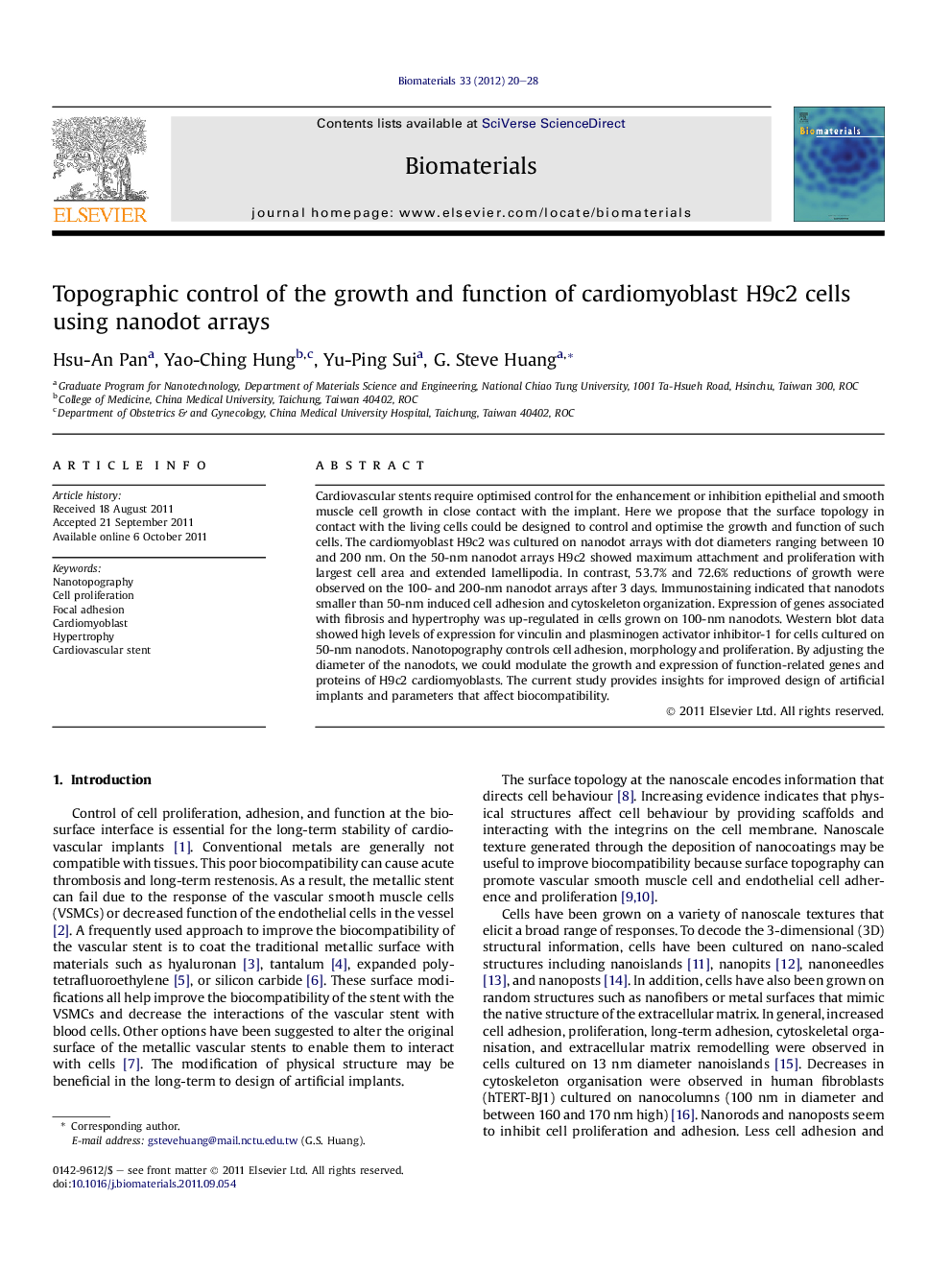| Article ID | Journal | Published Year | Pages | File Type |
|---|---|---|---|---|
| 7750 | Biomaterials | 2012 | 9 Pages |
Cardiovascular stents require optimised control for the enhancement or inhibition epithelial and smooth muscle cell growth in close contact with the implant. Here we propose that the surface topology in contact with the living cells could be designed to control and optimise the growth and function of such cells. The cardiomyoblast H9c2 was cultured on nanodot arrays with dot diameters ranging between 10 and 200 nm. On the 50-nm nanodot arrays H9c2 showed maximum attachment and proliferation with largest cell area and extended lamellipodia. In contrast, 53.7% and 72.6% reductions of growth were observed on the 100- and 200-nm nanodot arrays after 3 days. Immunostaining indicated that nanodots smaller than 50-nm induced cell adhesion and cytoskeleton organization. Expression of genes associated with fibrosis and hypertrophy was up-regulated in cells grown on 100-nm nanodots. Western blot data showed high levels of expression for vinculin and plasminogen activator inhibitor-1 for cells cultured on 50-nm nanodots. Nanotopography controls cell adhesion, morphology and proliferation. By adjusting the diameter of the nanodots, we could modulate the growth and expression of function-related genes and proteins of H9c2 cardiomyoblasts. The current study provides insights for improved design of artificial implants and parameters that affect biocompatibility.
